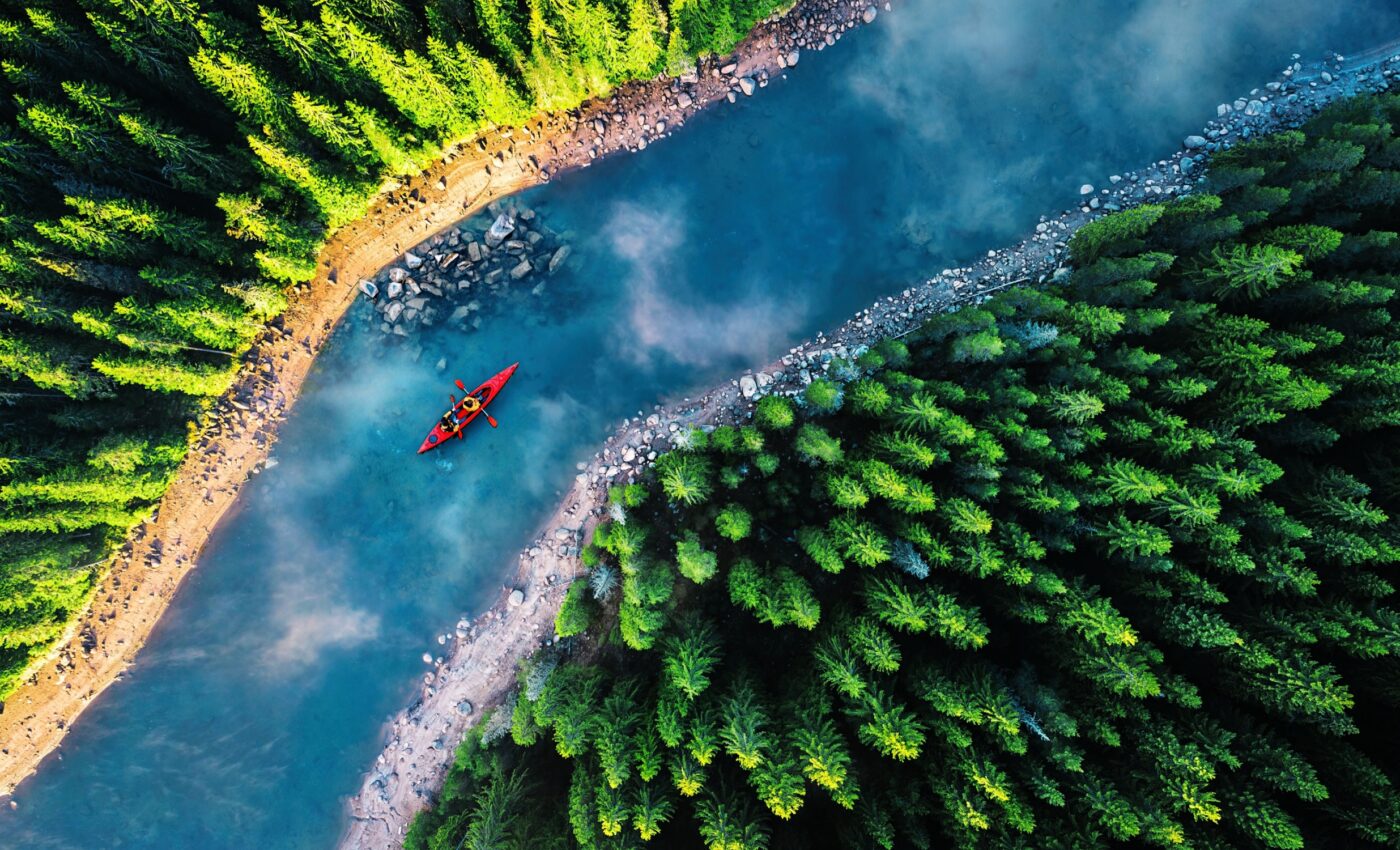
Nature's ecosystems constantly share energy to achieve balance
Scientists have recently uncovered a surprising balance between natural ecosystems. Leaves drift from towering trees into the water, where they become a feast for aquatic creatures. Insects, nourished within the stream, take flight and sustain birds and bats that call the forest their home.
The term allochthony, derived from the Greek words for “other” and “origin,” best describes this ongoing flow of energy and resources.
Recognizing the ecosystems balance
A global team led by Penn State researchers embarked on an ambitious project to analyze data from 149 studies. The goal was to quantify and understand allochthony in forest-stream ecosystems around the world. This large-scale approach sought to uncover patterns and principles governing this fundamental ecological process.
The findings revealed that forests and streams engage in an equal exchange of energy. “This was a really interesting and unexpected result because we know that there’s way more energy flowing into streams in the form of leaves that fall from trees than what comes out in the form of emergent aquatic insects,” stated Dr. Daniel Allen, the study’s lead author.
Nutritional quality in ecosystem balance
This observation seems counterintuitive: more energy appears to flow into streams than flows out. However, the study revealed a surprising truth: aquatic and terrestrial organisms consume near-equal amounts of resources originating from the opposite ecosystem.
The researchers propose that nutritional quality likely plays a major role in maintaining this ecosystem balance. Aquatic creatures receive a large amount of energy from leaves. Insects emerging from the stream have a higher nutritional value that compensates the aquatic creatures.
Variations in ecosystem balance
The research team further explored how allochthony patterns differ among various species groups and across diverse climates:
The players
Aquatic invertebrates (including various insect species), fish, terrestrial arthropods (insects, beetles, spiders), and terrestrial vertebrates (birds, rodents), all participate in this energy exchange.
However, the strength and pathways of this exchange vary significantly across these groups. For instance, land-dwelling vertebrates seem to rely less on resources originating from the stream.
The role of climate
Arid climates exhibit strikingly different patterns from tropical zones. In dry regions, aquatic invertebrates engage in nearly twice the amount of energy exchange compared to their counterparts in tropical environments.
Interestingly, fish across different climates maintain relatively consistent levels of allochthony. Understanding such climate-driven variations provides important clues about how these intricate exchanges might shift in response to changing environmental conditions.
Study significance
“Most people don’t think about streams and forests being interrelated, but the organisms those habitats support are dependent on energy and resources that come from outside their ecosystem,” noted Dr. Allen.
The balance of ecosystems is often underappreciated. By quantifying allochthony across the globe and under diverse conditions, this study highlights the delicate dependence between seemingly separate environments.
Key takeaway
Our daily lives often obscure the intricate web of ecosystems that supports us. This study shines a light on the beautifully balanced exchange between forests and streams, a powerful reminder of nature’s interconnectedness.
It urges us to protect these vital environments so they can continue to thrive. Ultimately, it reveals a simple truth: everything in nature is linked. The connection between forests and streams is but one example of the countless ways our world achieves balance.
As stewards of this planet, we must understand, cherish, and protect these delicate connections.
The team behind the discovery
The research was a collaborative endeavor, with contributions from Veronica Saenz, Kierstyn Higgins, and Alice Belskis of Penn State, among others from institutions such as the U.S. Geological Survey and universities across the globe.
This diverse team brought together expertise from various fields, underscoring the study’s comprehensive approach to understanding ecosystem interactions.
Supported by the U.S. National Science Foundation, this research not only advances our scientific knowledge but also serves as a reminder of the intricate connections that sustain life on Earth.
The study is published in the journal Ecology Letters.
—–
Like what you read? Subscribe to our newsletter for engaging articles, exclusive content, and the latest updates.
Check us out on EarthSnap, a free app brought to you by Eric Ralls and Earth.com.
—–













